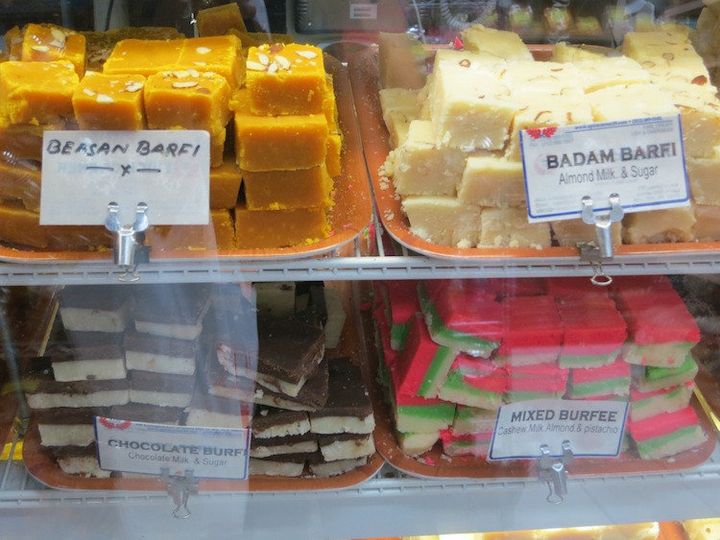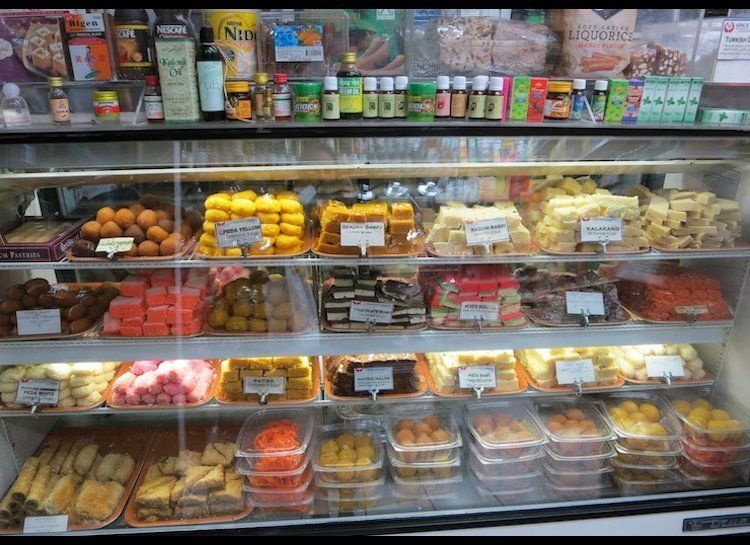
Dessert might not be the first thing that comes to mind when you think about South Asian food, but sweets are an integral part of South Asian cuisine and culture. Often overlooked, forgotten or even unknown outside of South Asia, sweets seem to have gotten lost in translation on many of the Westernized menus that we find in the United States. Where thousands of stand-alone shops sell nothing but sweets in India, Pakistan and Bangladesh, in the United States shops that offer any kind South Asian sweet, let alone ones singularly dedicated to sweets, are few and far between.
From deep-fried pancakes soaked in sugary syrup, to fudge-like squares garnished with edible, silver foil, South Asian sweets come in all shapes, sizes and flavors. With such great and delicious variety, it's too bad these confections seem to have such a low profile outside of South Asia.
Having not been exposed to the wonderful world of South Asian sweets before I studied in India, I was relieved and excited to discover that my sweet tooth would not be neglected during my stay. I quickly fell for mithai: a broad category of milk-based sweets. Burfi, one of the most popular types of mithai, became one of my favorites. Burfi itself can come in many flavors -- like kaaju burfi, made with cashews; pista burfi, made with pistachios; or badam burfi, made with almonds. Gulab jamuns -- deep-fried dough made of milk-solids, soaked in sweet syrup -- became a decadent vice for me, and I couldn't escape jalebi -- a circular or pretzel-shaped, deep-fried, orange treat, sold on so many street corners. Justifying my indulgent exploration into the world of South Asian sweets were the encouraging words of nearly everyone I shared a meal with. A little milk- and sugar-based dessert was good for my digestion, I was told, and would help settle the acidity of a spicy meal. I was in heaven.
Not only are sweets an important part of a complete, South Asian meal, but they are also an essential part of daily culture. Upon my arrival in India, I learned that giving and receiving sweets is a habitual way both to show hospitality and to thank someone for hosting you. Even as clueless as I was when I first arrived at my new home, I knew that I shouldn't decline the rasgulla -- a cottage-cheese-like dumpling, boiled in sugar syrup -- I was offered. If you are visiting someone's home, you should never show up empty-handed, even, as my Bangladeshi friend Shanaz Chowdhury says, if you're a frequent visitor. While the tradition sometimes strays in the United States to bringing beer, wine or alcohol, it is still very common, Shanaz explains, to bring a mixed box of sweets when you go to someone's house.
Exchanging sweets is also a central part of festivals like Diwali, one of the most important festivals for Hindus, and personal celebrations, like weddings, having a baby or getting a new job. If a new baby is born into your family, you buy sweets for your friends -- not the other way around. Likewise, if you get hired, you share your accomplishment by offering treats, not by accepting them. My nephew was born when I was living in a small town outside the city of Jaipur, and following the advice of a friend, I bought ladoos and burfi to deliver my good news properly. I love this tradition of giving, instead of receiving, when you have good news to share.
Unfortunately, finding good sweets outside of the South Asian subcontinent proves to be quite the task. Despite the abundance of Indian restaurants and food stores in New York City, for example, you will be hard pressed to find many specialty sweet shops. In Manhattan, Spice Corner in Curry Hill offers the best and largest selection you can find. If you want to find alternatives to this Curry Hill market in the city, you'll have to sit down at a restaurant. But even at restaurants, dessert, if offered, is often an afterthought. The Masala Wala in the Lower East Side makes an excellent gulab jamun, but this seems to be the exception, not the rule.
In New York, the sweets really worth eating, and in shops of their own, are in Jackson Heights, Queens. At Rajbhog, you can find up to 10 kinds of burfi, up to five varieties of ladoos and outstanding gulab jamuns. A block away, Maharaja Sweets offers an excellent array of almond and cashew rolls decorated with with Varakh -- a thin layer of silver foil -- alongside more burfi, rasgulla and jalebi.
With so many varieties, there really is a mithai for everyone. The trick may be finding them, but once you do, you'll definitely be going back for more!
